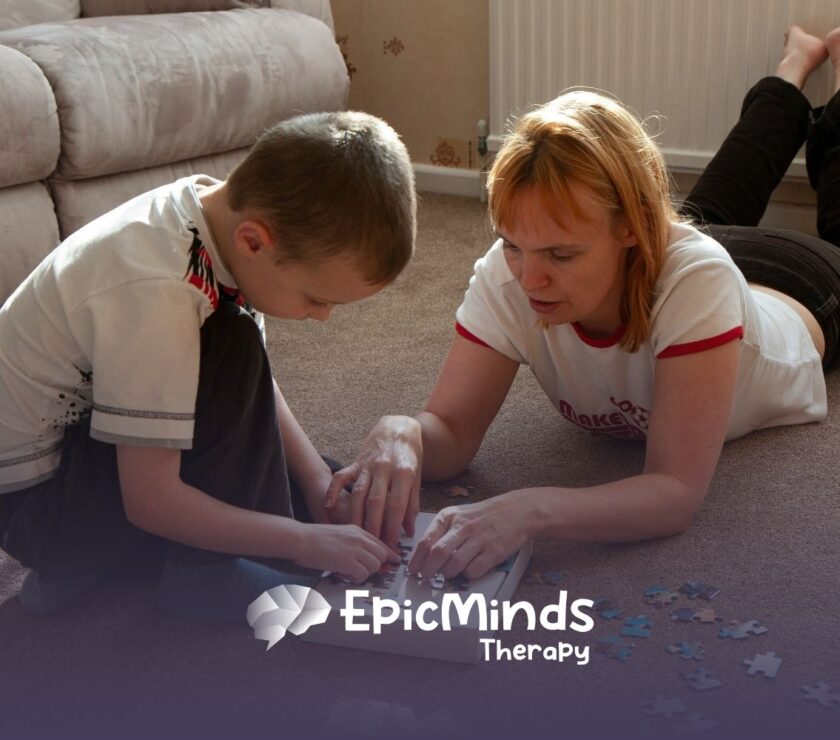ABA therapy has helped thousands of families navigate the challenges of autism and other developmental conditions—but how do you know if it’s right for your situation?
A few years ago, I met a mother whose 3-year-old son had just been diagnosed with autism. She was overwhelmed by what came next. She didn’t know if he would qualify for in-home ABA therapy or even where to begin.
Today, her son is thriving—using words, connecting with his peers, and even dressing himself each morning. The change didn’t happen overnight, but understanding who qualifies and getting started with the right support made all the difference.
If you’re wondering who can access ABA therapy and how to get started, this guide will walk you through everything—from eligibility and diagnosis to age-specific support and funding.
Who Can Benefit from ABA Therapy?
ABA therapy is highly flexible and supports a wide range of individuals. It’s not just for children or those with severe needs—anyone experiencing behavioral, developmental, or learning difficulties may be eligible.
Individuals with Developmental Challenges
ABA is often used to address developmental delays, helping people improve communication, manage behavior, and gain daily living skills.
Across Ages and Abilities
Whether you’re seeking autism early intervention for a toddler or life skills training for an adult, ABA adapts to meet unique goals. It can support academic learning, social interaction, and routines at home or in the community.
ABA Therapy for Autism Spectrum Disorder
ABA is most frequently recommended for individuals with autism spectrum disorder (ASD). It’s often covered by insurance only after a formal ASD diagnosis.
Why ABA Works for Autism
ABA helps break down complex behaviors into manageable steps. It teaches communication, social interaction, and daily routines—skills that often pose challenges for individuals on the spectrum.
Personalized Treatment Plans
A certified behavior analyst will create a tailored plan based on observed behavior, environment, and goals. This ensures the therapy targets the specific needs of the individual—whether that’s reducing tantrums or building independence.
Other Conditions Treated with ABA Therapy
ABA isn’t just for autism. It’s also useful for other developmental or mental health challenges.
Conditions That May Benefit
- Developmental delays: Difficulty with speech, motor coordination, or problem-solving
- Intellectual disabilities: Help with learning, daily tasks, and self-regulation
- Traumatic brain injury: Support with behavior control and cognitive recovery
- ADHD: Improving focus, reducing impulsivity, and building routine
- Panic disorder: Gradual exposure techniques to help manage anxiety
A Flexible Approach
Each treatment plan is adapted to the person’s diagnosis and goals. ABA methods remain consistent—rewarding positive behaviors and reducing those that get in the way of success.
Age Considerations for ABA Therapy
ABA therapy works across all age groups. Early intervention is ideal, but older children, teens, and adults can also see lasting benefits.
ABA for Young Children
ABA for toddlers focuses on foundational skills—communication, motor coordination, and emotional regulation. Starting early can lead to big improvements.
Role of Parents in Early ABA
Parents and caregivers are trained to use the same tools at home. This consistency helps children apply what they learn in therapy to everyday situations.
ABA for Teens and Adults
Older individuals may use ABA to build independence, manage emotions, and improve relationships.
Goals for Adolescents and Adults
- Social communication
- Emotional regulation
- Job readiness
- Daily living skills
Whether in school, at home, or in the workplace, ABA therapy continues to be practical and goal-driven.
Diagnostic and Assessment Requirements
Before beginning ABA therapy, an assessment process is required. This ensures the therapy is appropriate and tailored to the individual’s needs.
Functional Behavior Assessment (FBA)
An FBA is usually performed by a board-certified behavior analyst (BCBA). It identifies the triggers and purposes of specific behaviors, guiding the creation of a focused intervention plan.
Necessary Diagnoses for ABA Therapy Approval
To receive ABA therapy—especially through insurance—you typically need a formal diagnosis. Below are common diagnoses that qualify:
| Diagnosis | Support Areas |
| Autism Spectrum Disorder | Social skills, communication, behavioral challenges |
| Developmental Disabilities | Language delays, self-care, school readiness |
| Traumatic Brain Injury | Behavioral regulation, cognitive support |
| ADHD | Focus, impulse control, task completion |
| Panic Disorder | Coping skills, anxiety management |
The diagnosis must be documented by a licensed professional, such as a pediatrician, psychologist, or behavior analyst.
Insurance and Funding for ABA Therapy
Accessing ABA therapy often depends on insurance or public funding. Fortunately, coverage has expanded significantly across the United States.
What Does Insurance Typically Cover?
- Sessions with licensed providers
- Parent training and consultations
- Treatment planning and reassessment
- Services recommended by a qualified healthcare provider
State Regulations and Support
All 50 states mandate some form of autism insurance coverage, though rules and limits vary. Medicaid and other public programs may also help cover therapy costs for qualifying individuals.
Navigating Authorization and Documentation
Getting Started with Authorization
Insurance providers usually require documentation, including:
- Diagnostic evaluation
- Completed FBA
- Treatment goals and plan of care
Your ABA provider often handles much of this paperwork, ensuring everything meets insurer guidelines.
Staying Organized
Having your diagnostic reports, assessments, and communication with providers in one place can speed up the approval process and help avoid delays.
Conclusion
ABA therapy is a proven, adaptable approach to helping individuals of all ages improve communication, behavior, and independence. Whether you’re a parent, caregiver, or adult seeking support, knowing who qualifies—and how to access it—makes a big difference.
With the right diagnosis, personalized assessments, and insurance knowledge, getting started becomes easier. ABA therapy isn’t just for autism—it’s a framework for positive change that can empower people to meet their goals.
At Epic Minds Therapy, we believe every person deserves the right support at the right time. Whether you’re just beginning the diagnostic process or have questions about insurance and next steps, we’re here to guide you.
Our board-certified behavior analysts work closely with families to create personalized ABA therapy plans that truly make a difference.
Contact Epic Minds Therapy today for a free consultation—and let’s find out if ABA therapy is the right fit for you or your child. A more connected, confident future could start here
Frequently Asked Questions
Who qualifies for ABA therapy?
Anyone with a behavioral or developmental condition—especially autism—may qualify. A formal diagnosis and assessment are typically needed to begin.
What do I need to start ABA therapy?
You’ll need an evaluation, a diagnosis from a licensed provider, and a behavior assessment. These help build a treatment plan that fits your goals.
Is ABA therapy only for autism?
No. While most often used for autism, ABA can also support those with ADHD, panic disorders, developmental delays, and other cognitive or behavioral needs.
How is ABA therapy funded?
Funding may come from private insurance, Medicaid, or state programs. Check your specific plan to learn what’s covered.
–
Sources:
- https://www.autismspeaks.org/state-regulated-health-benefit-plans
- https://www.ncsl.org/health/autism-and-insurance-coverage-state-laws
- https://www.appliedbehavioranalysisedu.org/2021/11/aba-for-non-autistic-children/
- https://my.clevelandclinic.org/health/treatments/25197-applied-behavior-analysis
- https://www.autismspeaks.org/applied-behavior-analysis
- https://gsep.pepperdine.edu/blog/posts/debunking-7-common-myths-about-aba-therapy.htm




